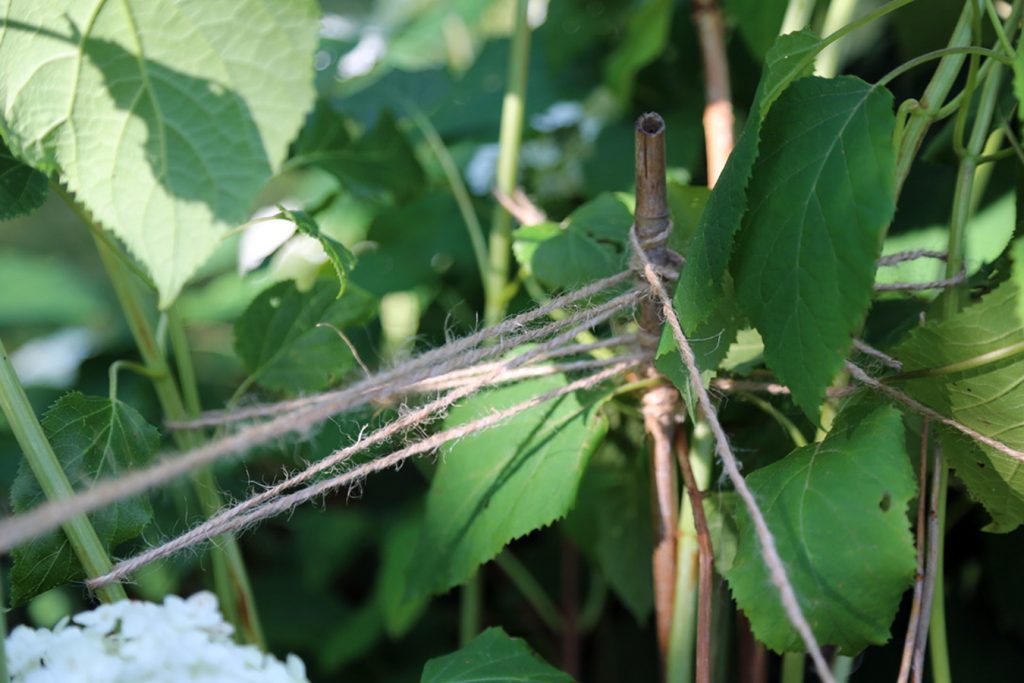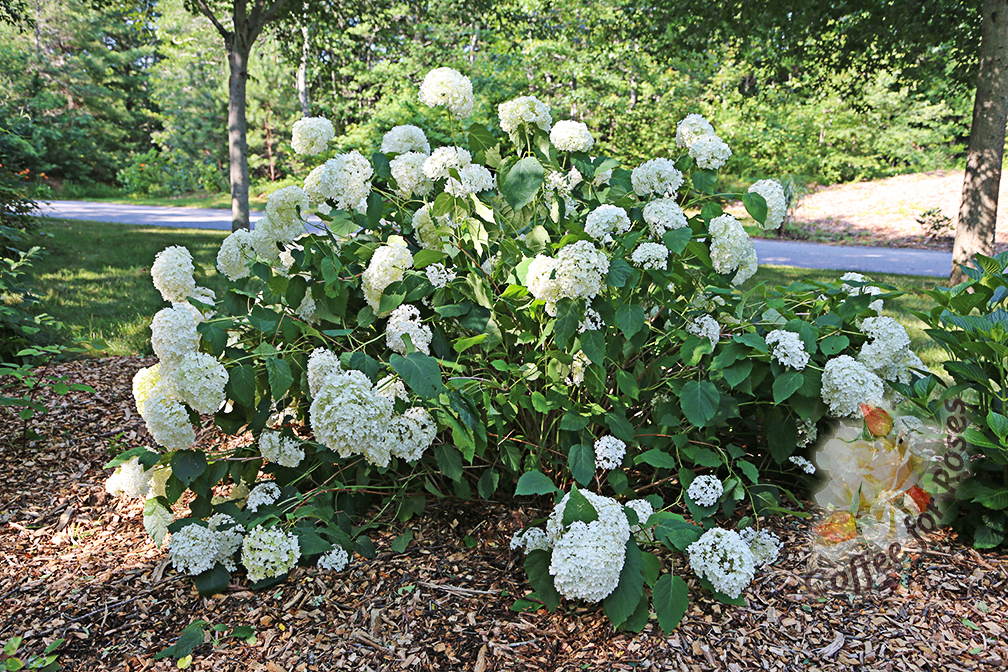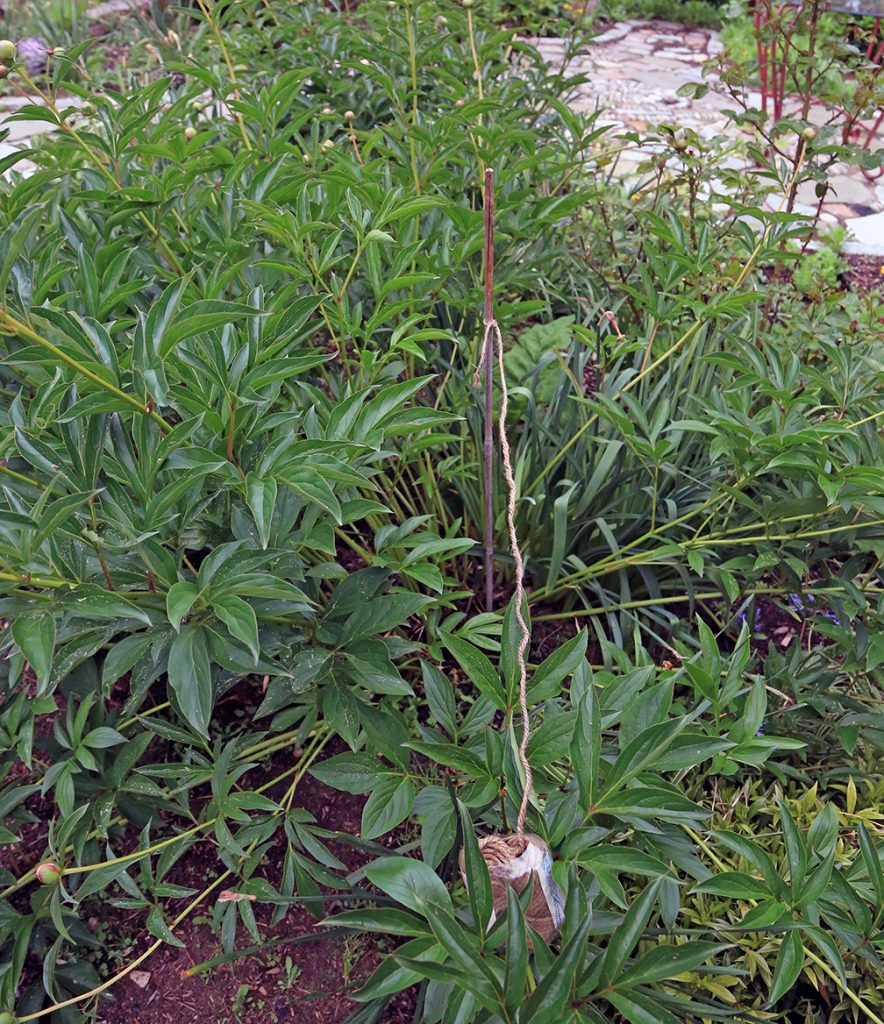Here is a method for staking peonies and hydrangeas: both have very large flowers, and these blooms can pull the stems down, especially after a heavy rain. This method can be done after the flowers have formed, so no need to beat yourself up for not remembering a grow-through support early in the season. Also, once done, the staking is invisible and the plant has a natural shape.
The method is the same for peonies and hydrangeas, but I have included photos of both:

Here is an Annabelle Hydrangea that is flopping. I have put a bamboo stake in the center of the plant. The top of that stake should be below the top of the stems so that when the staking is finished it doesn’t show.

Next, I tie a cord to the stake and then wrap it around the nearest cane, pulling that cane up close to the stake. Back to the stake, then once around the stake. Then pull the next cane up. You do not wrap the cord 360 degrees around the stem -only around it so that the stem is leaning onto the cord. After every single stem gets pulled up to an angle that is natural (some being near the stake and upright, but the ones further out being allowed to stay at a natural angle) you end by tying the string on the stake.

This is how the hydrangea looks when the staking is finished. You don’t see the string or the stake, and the plant has a natural appearance. These photos were originally posted on my older blog, Coffee For Roses
Here are some photos of the same technique used on peonies.

Here is the same technique used on a flopping peony. You see the stake, which is about 3/4 the height of the plant.
Looking down into the plant after staking.

Individual stems are pulled up one at a time, supported by the twine. When you’re finished and look down into the center of the plant, it looks like umbrella spokes.
Unless you’re looking straight down into the plant, this support system doesn’t show.


You’d never know that this peony was supported. I find it far better than any grow-through support I’ve tried.
Once you get the hang of it, this method of staking takes about 10 minutes per plant.
Super helpful. Thank you
Thank you. I have an hydrangea that’s in serious “flop mode”. It’s been like that for about a week because I had no idea what to do. Thank you. Hope it’s not too late.
Not too late! Go for it.
Would a 3 ft bamboo be good for a 1st year Vanilla strawberry?
I’d go to 4 feet so that you can stick one foot in the ground and still have enough for the plant up top.
Great. Thanks. Here in Atlanta this past summer was really bad for mildew on peonies. Any suggestions?
Don’t stress about it – if the foliage looks like it’s still capable of photosynthesis, leave the plant. But if the leaves look like they are about to close up shop, cut the stems back anytime now and don’t put the leaves in the compost.
Are you ever concerned about the stake harming the rootball? Also, should the stake be tied to one of the strong branches for extra support? Thanks!
No. One stake in the center of the plant won’t do significant damage. I use bamboo stakes that are only 1/4 of an inch around, but even if you used a 1″ square wooden stake it wouldn’t hurt the plant. Most of the roots are going out to the sides, beyond the dripline.